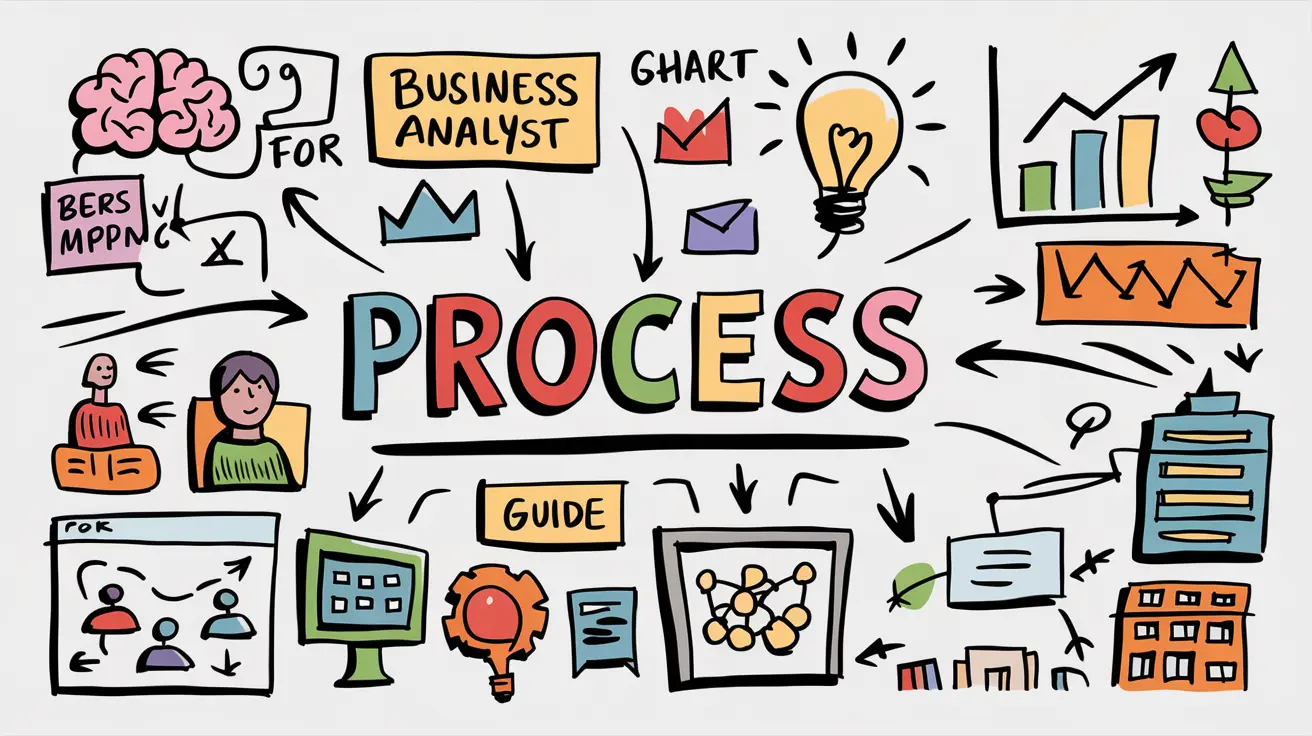Process Mapping Basics
Process mapping is a valuable technique used to gain a clear understanding of how processes within a business are currently functioning. It involves visually representing each step of a process, including the inputs, outputs, and activities involved. By mapping out processes, businesses can identify opportunities for improvement, streamline operations, and enhance overall efficiency.
The first step in process mapping is to identify the specific process that will be mapped. This can be any series of activities within a business, such as order fulfillment or customer service. Once the process is chosen, the next step is to gather relevant information about the process. This may involve observing the process in action, interviewing employees involved, or analyzing existing documentation. With this information, a process map can be created, depicting each step in a clear and visual manner. Process mapping provides a foundation for further analysis and continuous improvement efforts, ultimately driving business success.

Understanding the Role of a Business Analyst
A business analyst plays a crucial role in the success of a company. They act as a bridge between the business stakeholders and the technical team, ensuring that both parties understand and meet each other’s requirements. The primary responsibility of a business analyst is to gather and analyze data to identify gaps, improve processes, and drive solutions.
One of the key tasks of a business analyst is to conduct thorough research and gather information to understand the current state of processes and identify areas for improvement. They interact closely with the end-users and stakeholders to comprehend their needs, challenges, and goals. By carefully studying and documenting the existing processes, a business analyst can identify inefficiencies, bottlenecks, and gaps in the system. Through their deep understanding of the organization’s objectives and the industry best practices, they are able to suggest practical and effective strategies for improvement. The expertise of a business analyst is invaluable in ensuring that businesses operate smoothly and efficiently.
Benefits of Process Mapping
Process mapping has become an essential tool for businesses today as it offers numerous benefits. One of the key advantages of process mapping is that it helps in identifying inefficiencies and bottlenecks in an organization’s processes. By visually representing the flow of activities, process mapping allows businesses to pinpoint areas of improvement and streamline their operations. This not only enhances productivity but also reduces costs and eliminates redundant steps, leading to overall efficiency gains.
Another benefit of process mapping is that it promotes better communication and collaboration within teams. By creating a visual representation of processes, it becomes easier for team members to understand their roles and responsibilities, as well as how their tasks fit into the larger picture. This clarity helps to minimize misunderstandings, improve decision-making, and foster a culture of collaboration. Additionally, process mapping provides a platform for team members to brainstorm ideas and identify innovative solutions to challenges, further enhancing creativity and problem-solving capabilities.
Identifying Process Mapping Tools
Process mapping tools are essential for businesses to effectively analyze and document their processes. These tools provide a visual representation of the steps involved in a particular process, helping to identify areas of inefficiency, bottlenecks, and potential improvements. One commonly used process mapping tool is flowchart software, which allows users to create detailed diagrams illustrating the sequence of tasks and decision points within a process. This tool is particularly helpful for clearly communicating the flow of activities to team members and stakeholders, enhancing collaboration and understanding.
In addition to flowchart software, another widely employed process mapping tool is value stream mapping (VSM). VSM helps businesses to identify and eliminate waste throughout the entire value stream, from raw materials to the delivery of the finished product or service. By mapping out the current state of the value stream and then creating a future state map with improved processes, VSM enables businesses to streamline operations, reduce lead times, and enhance customer satisfaction. These tools, along with others such as swimlane diagrams and process flow diagrams, provide businesses with the means to comprehensively analyze their processes and make informed decisions for improvement.
Step-by-Step Process Mapping Techniques
When it comes to process mapping, following a step-by-step approach can help ensure accuracy and clarity. The first step is to identify the process that needs to be mapped. This involves understanding the inputs, outputs, and activities involved in the process. Once the process is clearly defined, the next step is to gather the necessary information. This can be done through interviews with process stakeholders, observation of the process in action, or by reviewing existing documentation or data. The information gathered should be comprehensive and accurate to ensure an effective mapping exercise.
Gathering Information for Process Mapping
Effective process mapping relies heavily on gathering accurate and comprehensive information. This step is essential for understanding the current state of a process and identifying areas for improvement. There are several ways to gather information for process mapping, depending on the specific process and context involved.
One common method is conducting interviews with key stakeholders and process owners. These interviews help to gather firsthand information about the process, including its objectives, inputs, outputs, and any existing challenges or bottlenecks. By speaking directly with those involved in the process, valuable insights can be gained, and a more comprehensive understanding of the process can be developed.
In addition to interviews, gathering information for process mapping can also involve document reviews and observations. Documents such as standard operating procedures, work instructions, and data records can provide valuable insight into the process steps, rules, and measurements. Moreover, observing the process in action can help to identify any discrepancies between the documented process and its actual execution. By combining different information-gathering methods, a more accurate and holistic view of the process can be obtained, laying the groundwork for effective process mapping.
Analyzing and Documenting Processes
Analyzing and documenting processes is a crucial step in the process mapping journey. When it comes to analyzing processes, it involves a thorough examination and evaluation of how tasks are currently being carried out within an organization. This analysis helps in identifying various aspects such as bottlenecks, inefficiencies, and areas of improvement. By studying each step in the process, it becomes easier to identify any redundancies, duplications, or unnecessary complexities that might exist.
Documenting processes is equally important as it assists in creating a clear and comprehensive visual representation of how a process flows from start to finish. This documentation typically includes detailed information about each step involved, the resources required, and the inputs and outputs associated with each task. It is essential to ensure that the documentation accurately captures all the necessary information to facilitate a thorough understanding of the process. When done correctly, this documentation can serve as a valuable resource for training, auditing, and improving processes within an organization.
Identifying and Addressing Process Gaps
One of the key objectives of process mapping is to identify any gaps or inefficiencies in the existing processes of a business. By visually representing the flow of activities, a business analyst can easily identify areas where the process may be break down or where certain steps are missing. These gaps can range from simple process bottlenecks to more complex issues that hinder the overall efficiency and effectiveness of the process.
Once the process gaps have been identified, it is crucial to address them in order to improve the overall performance of the process. This can involve various steps such as reconfiguring the sequence of activities, eliminating redundant steps, or implementing automation solutions. By addressing these gaps, businesses can streamline their processes, reduce errors, and enhance customer satisfaction. It is important to regularly review and update process maps to ensure that any new gaps or inefficiencies are promptly identified and addressed, allowing for continuous improvement within the organization.
Leveraging Process Mapping for Continuous Improvement
Process mapping is a valuable tool that organizations can use to identify areas for improvement and make informed decisions about streamlining their operations. By analyzing and documenting existing processes, businesses can gain a clear understanding of how tasks and activities are currently performed. This knowledge can then be leveraged to identify areas of inefficiency or bottlenecks, and to develop strategies for improvement. By implementing process mapping techniques, organizations can visualize their workflows, identify areas for optimization, and ultimately enhance their overall performance.
One of the key benefits of process mapping is its ability to facilitate continuous improvement within an organization. By providing a clear visual representation of existing processes, process maps enable businesses to identify process gaps and areas of improvement. This information can then be used to develop effective solutions and make data-driven decisions. Moreover, process mapping can help organizations streamline their workflows, enhance efficiency, reduce waste, and ultimately improve their bottom line. By leveraging process mapping for continuous improvement, businesses can stay competitive in today’s fast-paced and ever-changing market.
Tips for Effective Process Mapping
One important tip for effective process mapping is to involve the right stakeholders. It is crucial to include representatives from different departments or teams that are involved in the process. By involving all relevant stakeholders, you can ensure that all perspectives are considered and that the mapping accurately reflects the entire process. This collaborative approach also helps to increase buy-in and ownership from everyone involved, leading to greater success in implementing any process improvements identified.
Another tip for effective process mapping is to use clear and concise language. Avoid technical jargon and instead use plain language that is easily understandable by all stakeholders. Using simple and straightforward language helps to ensure that the mapping is accessible to everyone and prevents confusion or misinterpretation. Additionally, using clear language helps to keep the focus on the process itself rather than getting caught up in complex terminology, allowing for better understanding and implementation of any changes or improvements identified through the process mapping exercise.
What is process mapping?
Process mapping is a visual representation of a specific business process, illustrating the steps involved, the flow of information, and the roles and responsibilities of individuals involved in the process.
What is the role of a business analyst in process mapping?
The business analyst plays a crucial role in process mapping by analyzing and documenting existing processes, identifying areas for improvement, and facilitating communication and collaboration among stakeholders.
What are the benefits of process mapping?
Process mapping offers several benefits, including improved understanding of business processes, identification of process inefficiencies, better communication and coordination among team members, and opportunities for continuous improvement.
How can I identify the right process mapping tools?
To identify suitable process mapping tools, consider factors such as the complexity of the process, collaboration requirements, ease of use, and integration capabilities with existing systems. Popular tools include flowchart software, process mapping software, and even whiteboards.
What are the step-by-step process mapping techniques?
Step-by-step process mapping techniques involve identifying the process to be mapped, gathering information from stakeholders, analyzing and documenting each step of the process, and identifying any gaps or areas for improvement.
How do I gather information for process mapping?
Gathering information for process mapping can be done through interviews, observations, document reviews, and workshops with key stakeholders. It is important to involve all relevant parties to ensure accurate and complete information.
How do I analyze and document processes?
Analyzing and documenting processes involves breaking them down into individual steps, capturing relevant data and information, and using process mapping symbols and notation to create a visual representation of the process.
How can I identify and address process gaps?
Identifying process gaps involves analyzing the process map, identifying bottlenecks, inefficiencies, or areas where tasks are not clearly defined. Once identified, these gaps can be addressed through process redesign, automation, or training initiatives.
How can process mapping be leveraged for continuous improvement?
Process mapping provides a clear understanding of the current state of processes, allowing organizations to identify opportunities for improvement and implement changes that lead to increased efficiency, reduced costs, and improved customer satisfaction.
What are some tips for effective process mapping?
Some tips for effective process mapping include involving key stakeholders, keeping the process map simple and easy to understand, regularly reviewing and updating the process map, and using visual aids and diagrams to enhance clarity.














Leave a Reply